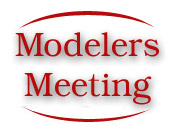
11 January 2000
Long Beach, California

11 January 2000
Long Beach, California
Attendees:
Gene Takle welcomed the group, and the group participated in self introductions. Thanks were extended to the Electric Power Research Institute for the arrangements. A brief overview of PIRCS and its mission was given. Copies of the JGR paper on experiment 1a and the AMS extended abstract of experiment 1b were distributed. A status report on modeling results of experiment 1b showed that 12 models have submitted all the required data. February 15, 2000 is the deadline for groups to submit results for experiment 1b in order to be included in the paper to be submitted to JGR.
A brief presentation was made by Xin-Zhong Liang on results of using MM5v3 over the US for July 1993. He showed that the NCEP/NCAR reanalysis, compared to the ECMWF gave only about .30 correlation in data poor regions. By extending the grid 30% to the south, the model can capture the effect of sea surface temperatures in the Gulf within the model and compensates for the poor representation by the reanalysis.
CSL computing requests were discussed by C. Hakkarinen. The requests must demonstrate use of at least 4 and more likely 8 or 16 processors. A PIRCS collaborative proposal would be well received. Those that are interested will send a paragraph to ISU by Sat night to be included in the ISU/PIRCS proposal. URL is www.scd.ucar.edu/csl/.
PIRCS Experiment 1c (a 2yr run over US) was discussed. It was decided that the PIRCS domain needs to be extended south to capture the NA monsoon and the Gulf of Mexico. A resolution of 40 km might offer significant advantages over 60 or even 50 km for reasons discussed later by M. Fox-Rabinovicz. It was suggested that one group should do a study of the candidate domain sizes to find the optimum configuration. About 6 modeling groups indicated interest in doing this experiment.
Jian-Hua (Joshua) Qian gave a brief overview of the IAI/ARC work plan over South America. The period to be covered in a 2 yr, 3 month period ending May 99. Six models are included.
PIRCS 2 was discussed very briefly. Candidate regions are South America and West Africa (CATCH) region. John Roads mentioned that the GEWEX CATCH region in West The advantage of the South American region is the availability of more data, particularly in the Brazil region where some tower data from the LBA experiment will be available. The steepness of the Andes terrain may offer another modeling challenge not encountered in the US simulation. Some modeling groups expressed interest in grid nesting and variable grid systems.
A brief presentation was made by Michael Fox-Rabinovicz on his stretched grid results. His simulation for July 1993 showed that he was able to get both the location and magnitude of the flood footprint quite correctly. He also showed sensitivity to resolution in the Louisiana region by running the same simulation at 60 km and 40 km. The 40-km simulation captured the high precipitation region whereas the 60-km simulation gave a very poor representation of this region.
Zaitao Pan, Iowa State
University panz@iastate.edu
Jian-Hua (Joshua) Qan, GSFC qian@agnes.gsfc.nasa.gov
Michael Fox-Rabinovitz, U of MD and NASA/GSFC foxab@atmos.umd.edu
Tanya Smirnova, FSL smirnova@fsl.noaa.gov
Georg Grell, FSL grell@fsl.noaa.gov
Ruby Leung, PNN ruby.leung@pnl.gov
David Pllard, Penn State pollard@essc.psu.edu
Eric Small, New Mexico Tech esmall@nmt.edu
Xin-Zhong Liang, Illinois State Water Survey xliang@uiuc.edu
Sin Chan Chou, CPTEC/INPE, Brazil chou@cptec.inpe.br
Fedor Mesinger, NCEP/EMC mesinger@ncep.noaa.gov
Ana Maria B. Nunes, CPTEC/INPE, Brazil bueam@cptec.inpe.br
Jens H. Christensen, DMI ;jhc@dmi.dk
John Michalakes, ANL/NCAR michalak@ucar.edu
Bob Oglesby, Purdue roglesby@purdue.edu
Jay Larson, ANL larson@mcs.anl.gov
Jinwon Kim, LBL jinwon.kim@lbl.gov
Norm Miller, LBLL ;nlmiller@lbl.gov
Yuanlong Hu, MIT hyl@mit.edu
Ming Chen, PSU cming@essc.psu.gov
Jimy Dudhia, NCAR dudhia@ucar.edu
John Roads, Scripps/UCSD jroads@ucsd.edu
Chuck Hakkarinen, EPRI chakk@mecca.epri.com
Hans von Storch, GKSS storch@gkss.de
Gene Takle, Iowa State University gstakle@iastate.edu Linda Mearns Also Bill Kuo, Bob Gall
Africa is an area that has not been simulated by any other modeling groups. Also, this is the generation region for hurricanes that strike the US coast. The major problem is that this is a data-poor area. However, it would allow intermodel variances to be examined.


Copyright/Trademark
Legal Notice